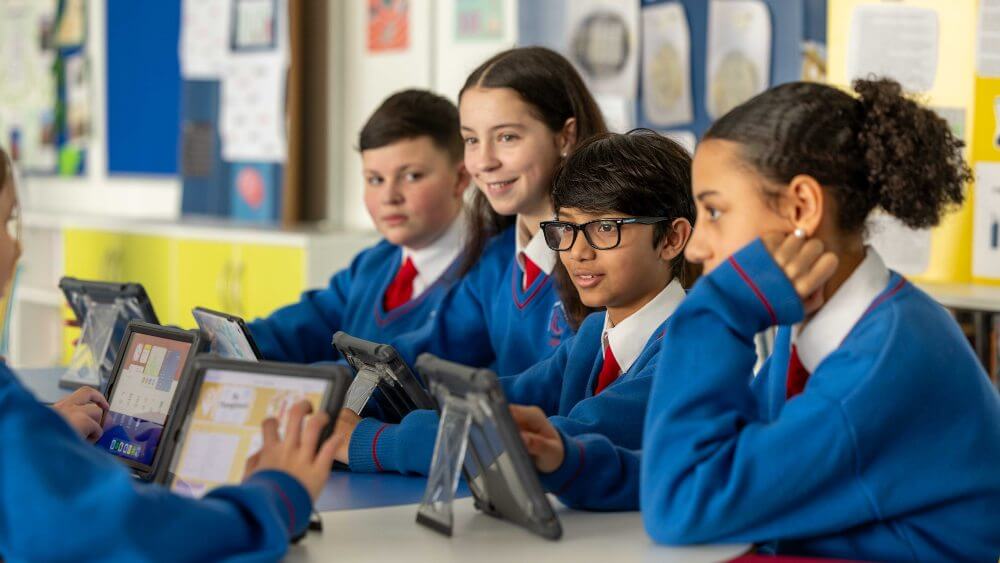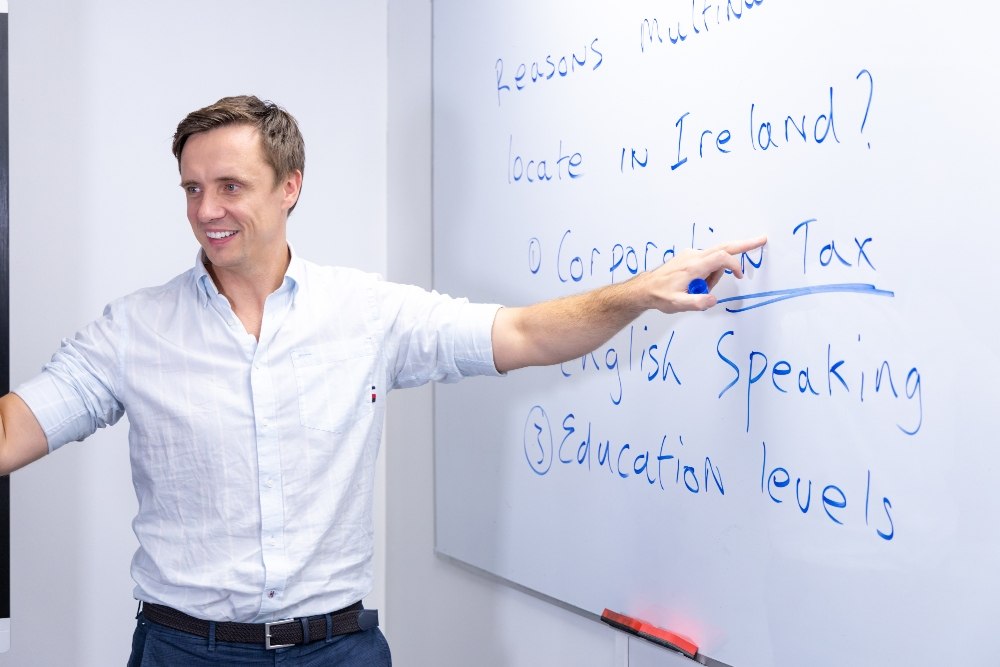When it comes to how we educate tomorrow’s generations, with the onset of AI digital readiness is no longer optional – it’s essential for Ireland’s future, argues Ian Gaughran, CEO of Olive for Education.
Learning how to learn is the most valuable lesson one can be taught in school. How we learn and retain information leaves a deeper, longer-lasting impact than the content itself – this must be at the forefront when exploring different ways of learning.
In a world that’s constantly evolving, with emerging technologies and climate crises, and shifting industries and job markets – adaptability, critical thinking, and digital confidence are the skills that will define the next generation. In order to thrive in this world, we must be in a constant state of learning – and the precedent for such starts in school.
“AI and automation have increased demand for particular skillsets and reduced demand for others, and there is no sign of this development slowing down”
The ability to think critically, questioning preexisting notions, and being able to adapt are habits of the mind cultivated through particular ways of learning – methods that showcase the value of continuous, life-long learning. It is not enough for students to rote-learn pieces of information. That information may be obsolete by the time they leave school or may not be relevant to what they do in the future.
Many jobs that exist today didn’t exist some five years ago, and many jobs that did no longer exist. AI and automation have increased demand for particular skillsets and reduced demand for others, and there is no sign of this development slowing down. What is certain is that young people must be equipped to examine and engage with information, whatever the specific material, which increasingly means being digital literate.
AI as a means for empowerment
For decades, Ireland has rightly been celebrated as a knowledge economy – a hub for innovation and global business. Our reputation has attracted leading multinational companies, particularly in sectors like technology, finance, and pharmaceuticals, drawn by our skilled workforce.
However, we cannot afford to rest on our laurels – concerningly, that appears to be exactly what we’re doing. Irish teenagers are reportedly “substantially” below the EU and OECD averages in using digital technology for learning both inside and outside of the classroom. A 2020 Accenture survey further confirmed low confidence in digital readiness, with only 13% of employers believing graduates are well-equipped for the future workforce. One can only imagine what this figure is in 2025. This highlights a significant skills gap between education and industry expectations, which may come as a surprise in a country long known as the land of saints and scholars.
Many parents admit weariness and resistance to the prospect of more screen time for their children. This is a fair and important concern when it comes to increasing tech in the classroom. However, this concern can be addressed by distinguishing between passive and purposeful digital use. Screens are simply tools; their impact depends on how they are used.
Outside the classroom, screen time can often involve endless scrolling and can add to screen fatigue. Inside the classroom, by contrast, screens can support active, engaged learning – becoming a gateway to creativity, critical thinking, collaboration, real-world problem solving, and exploring AI as a means for empowerment. These skills are essential in preparing students for higher education and the working world.
This distinction becomes even more critical when we consider how young people often overestimate their digital competencies. Despite being thought of as “the digital generation”, the ECDL Foundation describes this as a “dangerous fallacy.”
Time spent online doesn’t equate to digital skills or mastery of technology. That time must be spent effectively and with structure. Schools are uniquely placed to play a larger role in ensuring this, given that’s where students spend the majority of their time and are taught other things they carry through life. To pretend that the future is not digitally driven, or to argue that education should revert to pen and paper, is to bury one’s head in the sand. This ultimately disadvantages the young people and future of Ireland.
Digital literacy in Irish schools
The pressing need for digital literacy in Irish schools is, thankfully, being recognised by new reforms to the Leaving Cert. The pending changes underscore the fact that digital tools are now the norm in higher education and the workplace, and that students must be made familiar with them ahead of time.
“If we get this right, we’ll unlock a generation of learners who aren’t just ready for change, they’ll lead it”
Students will soon be expected to submit coursework online, collaborate via cloud platforms, and navigate productivity tools like Microsoft 365 and Google Workspace as second nature. These are the same tools that shape the world of work. This is an opportunity for Irish schools to champion digital learning and equip young people with the skills they need to get the most out of new technologies within a structured, supportive environment guided by educators.
Schools can no longer lag behind in the digital era. They must lead the way, showcasing the importance of having technology in the classroom so that it becomes not only a place for academic learning but for building critical digital skills. By integrating lessons geared towards digital fluency, alongside traditional subjects, students can develop positive and purposeful digital habits – ones that enhance focus, promote responsible use, and support long-term skills needed beyond the classroom.
The good news is, we don’t have to reinvent the wheel. Irish schools are already filled with dedicated educators. What they need is the right support – the infrastructure, the training, and the confidence to integrate digital strategies into their teaching. Technology is not a replacement for teachers; it’s an ally. Used well, it supports learning, streamlines communication, and makes classroom time more impactful.
The first of the Leaving Cert reforms, the most ambitious in a century, are to be implemented this September. They include increased continuous assessment, additional subjects and, importantly, new approaches to learning. The new assessment model means that students will receive a minimum 40% of their grades from project work or practicals across all subjects. This necessitates digital tools in the production and submission of work.
To effectively prepare students for the future, the Irish education system must prioritise adaptability, curiosity, and the ability to engage meaningfully with an ever-evolving reality and new information.
To do so, it must embrace digital tools. This is not about replacing what already works but about strengthening the ways in which young people learn to think, question, and grow.
Reforming the Leaving Cert is not about turning classrooms into tech hubs. It’s about preparing young people for the world they’re stepping into – a world where digital skills are no longer optional. If we get this right, we’ll unlock a generation of learners who aren’t just ready for change, they’ll lead it.
Image at top: Photo by algoleague on Unsplash
-
Bank of Ireland is welcoming new customers every day – funding investments, working capital and expansions across multiple sectors. To learn more, click here
-
For support in challenging times, click here
-
Listen to the ThinkBusiness Podcast for business insights and inspiration. All episodes are here. You can also listen to the Podcast on:
-
Spotify
-
SoundCloud
-
Apple





